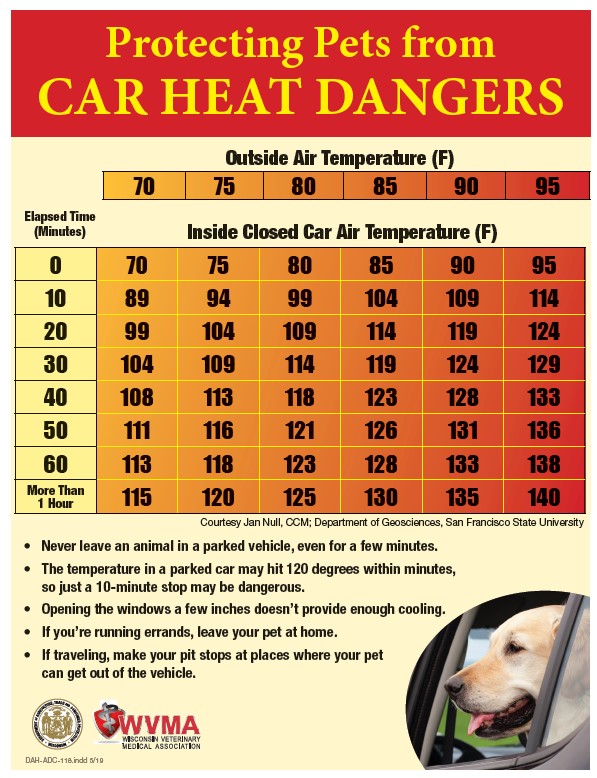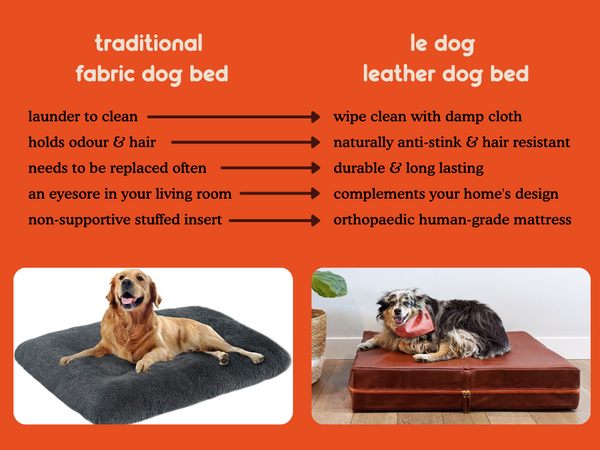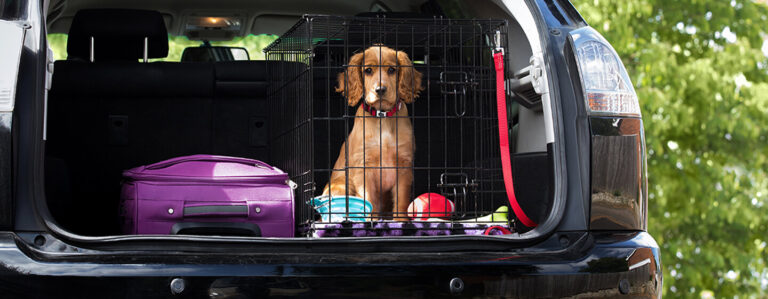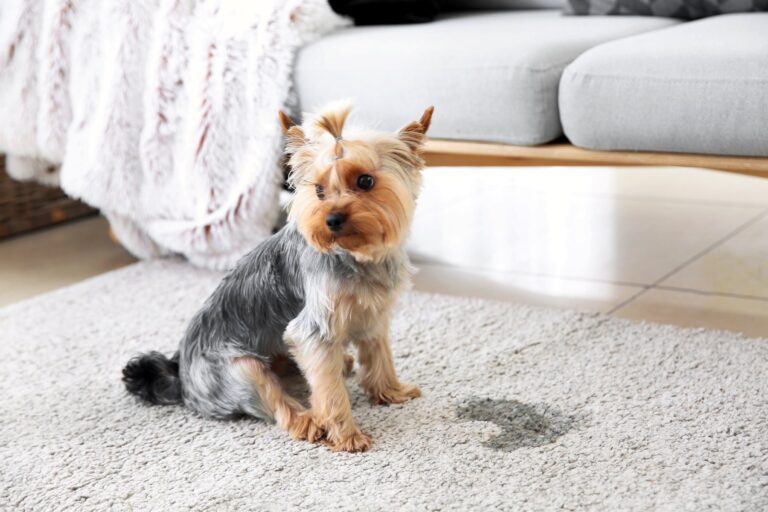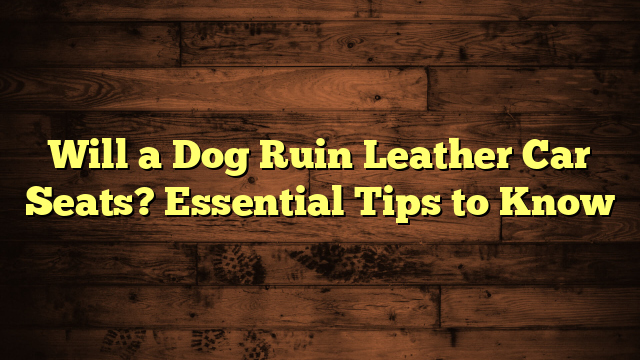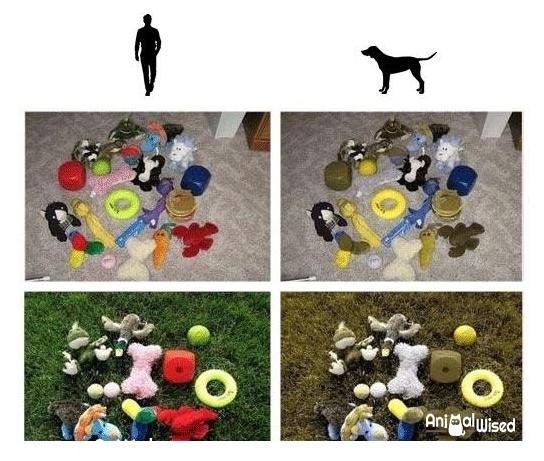Is It Safe for Dogs to Ride in the Back of an SUV? Unleashed Truths
It can be safe for dogs to ride in the back of an SUV if proper precautions are taken. Safety measures include using a crate or a dog seat belt.
Dogs love car rides, but their safety is paramount. Allowing your dog to ride in the back of an SUV can be safe, provided you use appropriate restraints. Unrestrained pets can be a distraction to drivers and pose a risk in case of sudden stops or accidents.
Crates and dog seat belts help ensure your dog’s safety by preventing them from moving around or being ejected from the vehicle. Always check that the crate is securely fastened and the seat belt is of good quality. Prioritizing your dog’s safety makes travel enjoyable for both you and your furry friend.
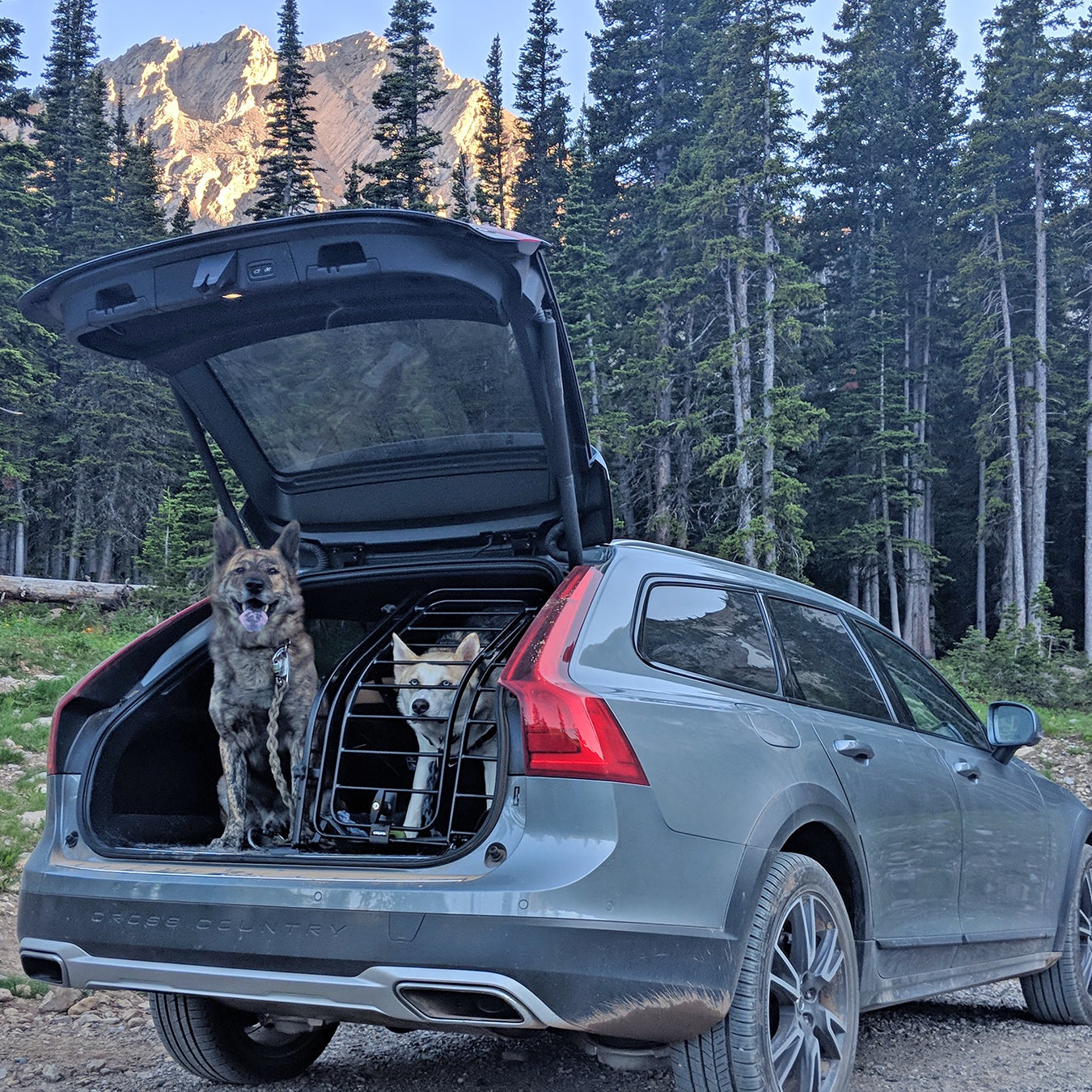
Credit: www.outsideonline.com
Introduction To Canine Car Travel
Taking your dog on car trips can be fun. But, is it safe for dogs to ride in the back of an SUV? Let’s explore the factors affecting your dog’s safety during car travel.
Factors Affecting Safety
Several factors impact your dog’s safety in an SUV:
- Dog’s Size: Small dogs need extra care.
- Dog’s Health: Sick dogs may need special arrangements.
- Restraints: Use seat belts or crates for safety.
- Vehicle Condition: Ensure the SUV is in good condition.
- Driving Style: Drive smoothly to avoid sudden stops.
Purpose Of The Article
This article aims to educate dog owners. Safe car travel for dogs is crucial. We provide tips and guidelines for a safer journey. Understanding the risks helps in better preparation. Your dog’s comfort and safety should always come first.
Use the table below for a quick safety checklist:
| Checklist Item | Importance |
|---|---|
| Use Proper Restraints | High |
| Check Vehicle Condition | Medium |
| Monitor Dog’s Health | High |
| Drive Smoothly | High |
| Provide Water and Breaks | Medium |
Pros And Cons Of Suvs For Dogs
Owning an SUV can be a great choice for dog owners. These vehicles offer ample space and comfort for your furry friend. However, there are potential risks to consider. Understanding the pros and cons can help you make an informed decision.
Space And Comfort
SUVs provide plenty of space for your dog to move around. This can make long trips more enjoyable for both you and your pet. The spacious interior allows for the addition of dog beds or crates, ensuring maximum comfort.
The higher ride height of SUVs also means better visibility for your dog. They can enjoy the scenery, reducing anxiety during travel. With more room, there’s less chance of your dog feeling cramped or stressed.
Potential Risks
Despite the benefits, there are potential risks associated with letting your dog ride in the back of an SUV. One major risk is the lack of restraint. In the event of a sudden stop or accident, an unrestrained dog can become a projectile, causing injury to themselves and other passengers.
Another risk involves temperature control. SUVs can heat up quickly, and if the air conditioning isn’t sufficient, your dog may overheat. Ensuring proper ventilation and monitoring the temperature is crucial to keep your pet safe.
Additionally, the height of the SUV can pose a risk, especially for older dogs or those with joint issues. Jumping in and out of a high vehicle can lead to injuries. Using a ramp can mitigate this risk and make entry and exit easier for your dog.
Assessing The Risks
Is it safe for dogs to ride in the back of an SUV? This question worries many dog owners. It’s important to assess the risks involved. Let’s explore accident statistics and SUV design considerations.
Accident Statistics
Accidents can happen anytime. Dogs are at high risk in vehicle crashes. Studies show that unrestrained pets can cause distractions. Distracted driving leads to many accidents. In a crash, unrestrained dogs can get hurt or even die. It’s crucial to keep them safe.
Here’s a table showing accident statistics involving pets:
| Year | Accidents Involving Pets | Injuries | Fatalities |
|---|---|---|---|
| 2019 | 2,500 | 1,200 | 150 |
| 2020 | 2,800 | 1,300 | 170 |
| 2021 | 3,000 | 1,500 | 200 |
Suv Design Considerations
SUVs offer more space. This space can be both a blessing and a curse. More space means more room for the dog to move. But, it also means more risk if an accident happens. SUVs have a higher center of gravity. This makes them prone to rollovers.
Proper restraints are necessary. Use pet barriers, crates, or seat belts designed for dogs. These can reduce the risk of injury. Always ensure your dog is secure before starting your trip.
Here are some safety tips:
- Use a crash-tested dog crate.
- Install a pet barrier.
- Use a dog seat belt or harness.
By following these guidelines, you can ensure your dog’s safety in an SUV.
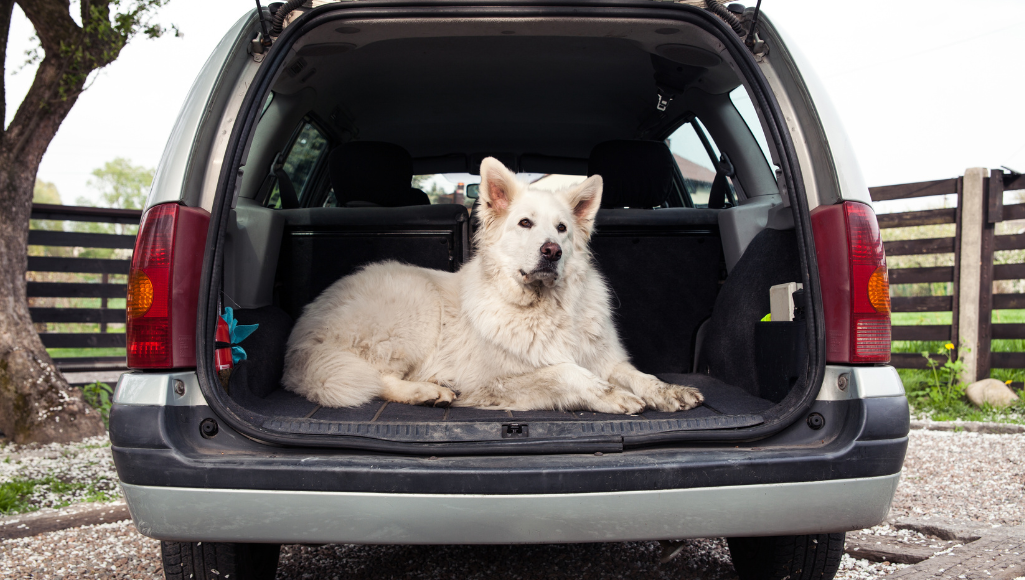
Credit: plushpawsproducts.com
Safety Measures For Dogs
Ensuring the safety of your dog during car rides is vital. Dogs need protection just like humans. Let’s explore key safety measures for dogs when riding in the back of an SUV.
Restraint Options
Restraints keep your dog safe and secure. They prevent distractions and protect in case of sudden stops.
- Seat Belts: Use a dog seat belt that attaches to their harness.
- Crates: Secure crates in the back of the SUV to provide a safe space.
- Barriers: Barriers keep your dog confined to the back area.
Behavioral Training Tips
Training your dog makes travel safer. Well-behaved dogs are less likely to cause distractions.
- Sit Command: Teach your dog to sit on command.
- Stay Command: Train your dog to stay in one place during the ride.
- Calm Behavior: Reward calm behavior with treats or praise.
Follow these safety measures to ensure a safe and enjoyable ride for your furry friend.
Legal Implications And Responsibilities
Allowing dogs to ride in the back of an SUV may seem convenient. But, it raises several legal questions. Understanding these legal implications is crucial for every pet owner. This section delves into the legal responsibilities and potential consequences of this practice.
Traffic Laws And Penalties
Different states have specific traffic laws about pets in vehicles. Some states require dogs to be restrained inside the car. Failure to follow these laws can result in fines. For example:
- California: Dogs must be restrained or in a secured crate.
- New Jersey: Unrestrained pets can lead to fines up to $1,000.
- Hawaii: Pets cannot sit on the driver’s lap.
Breaking these laws could lead to traffic tickets and higher insurance premiums. Keeping your dog unrestrained can also be considered distracted driving. This increases the risk of accidents.
Owner Liability
Being a responsible pet owner goes beyond following traffic laws. In case of an accident, an unrestrained dog can cause severe injuries. This makes the owner liable for damages.
Here are some potential liabilities:
- Medical expenses for injured passengers.
- Costs for vehicle repairs.
- Possible legal fees if sued.
Unrestrained dogs can also become projectiles during sudden stops. This can lead to serious harm for both the pet and other passengers. This increases the owner’s responsibility to ensure safety for everyone in the vehicle.
Understanding these liabilities helps in making informed decisions. It’s crucial to prioritize both legal compliance and safety.
Expert Opinions
Is it safe for dogs to ride in the back of an SUV? This is a common concern for dog owners. To answer this, let’s delve into expert opinions. We’ll explore insights from veterinarians and automotive safety standards.
Veterinarian Recommendations
Veterinarians stress the importance of keeping your dog safe during car rides. Unrestrained dogs can be a distraction and a danger. They recommend using dog seat belts or harnesses. These tools help prevent injuries in sudden stops or accidents.
A study by the American Veterinary Medical Association shows that unrestrained dogs are at higher risk of injury. They also pose a risk to the driver and other passengers. A secure crate is another option. It provides a safe space for your dog and minimizes movement.
Automotive Safety Standards
Automotive safety standards play a key role in ensuring your dog’s safety. Crash-tested dog restraints and crates are the best choices. The Center for Pet Safety conducts crash tests to evaluate the effectiveness of pet restraints.
Using equipment that meets these standards can significantly reduce injury risks. Look for products with safety certifications. These certifications ensure that the product has passed rigorous testing.
Here’s a table summarizing the key recommendations:
| Expert | Recommendation |
|---|---|
| Veterinarians | Use dog seat belts or harnesses |
| Automotive Safety Experts | Use crash-tested dog restraints and crates |
Following these expert recommendations can help keep your dog safe and secure during car rides. Pay attention to the quality and certification of the safety equipment you choose.
Real-life Stories
Real-life stories can offer invaluable insights into whether it is safe for dogs to ride in the back of an SUV. These stories highlight both positive experiences and cautionary tales, providing a balanced view.
Positive Experiences
Many dog owners have shared heartwarming stories about their pets enjoying rides in the back of their SUVs.
- Comfortable Space: Owners report that the spacious back of an SUV allows their dogs to stretch out and relax.
- Safety Features: Some SUVs come with built-in pet barriers and seat anchors, which keep dogs secure during travel.
- Happy Dogs: Dogs often seem happier and more relaxed when they can see out the windows and enjoy the view.
One owner, Jane, shared, “My dog loves riding in the back of our SUV. He has his own space and feels safe.”
Cautionary Tales
Not all stories have happy endings. Some owners have faced scary situations.
| Scenario | Outcome |
|---|---|
| Sudden Braking | Dog got injured due to lack of restraint |
| Unsecured Cargo | Loose items hit the dog during a turn |
| Open Windows | Dog jumped out, causing an accident |
Mark, another dog owner, recounted, “My dog was hurt because I didn’t use a harness. I felt terrible.”
These cautionary tales underline the importance of proper safety measures.
Best Practices For Suv Dog Travel
Ensuring your dog’s safety during an SUV ride is crucial. This guide will help you follow the best practices for SUV dog travel. With the right preparation, your canine companion can enjoy a safe and comfortable journey.
Preparation Checklist
- Secure Crate: Use a well-ventilated, crash-tested crate to keep your dog safe.
- Harness: Choose a sturdy, crash-tested harness that attaches to the seatbelt.
- Comfort Items: Bring your dog’s favorite blanket and toys to make the ride pleasant.
- Hydration: Ensure you have water and a portable bowl for your dog.
- Identification: Make sure your dog has a collar with an ID tag.
Emergency Protocols
In case of an emergency, having a plan is essential. Follow these steps to ensure your dog’s safety:
- First Aid Kit: Keep a pet first aid kit in your car.
- Vet Contact: Have your vet’s contact information easily accessible.
- Emergency Contacts: Know the location of nearby emergency veterinary clinics.
- Calmness: Stay calm to prevent your dog from becoming anxious.
Conclusion And Safety Verdict
Ensuring the safety of dogs while they ride in the back of an SUV is crucial. Pet owners want peace of mind and the best for their furry friends. This section will provide a final safety verdict and summarize key points. It will also offer recommendations for keeping dogs safe in the back of an SUV.
Summarizing Key Points
- Crates and Carriers: Using a sturdy crate or carrier can protect dogs during sudden stops or accidents.
- Seat Belts: Dog seat belts or harnesses are essential for restraining dogs and preventing injuries.
- Barrier Nets: Barrier nets can separate the dog from the passenger area, enhancing safety.
- Ventilation: Ensure proper ventilation in the SUV to keep the dog comfortable and safe.
- Regular Breaks: Take regular breaks during long drives to let the dog stretch and hydrate.
Final Recommendations
For the best safety practices, follow these recommendations:
- Use a Crate: Place the dog in a secure crate or carrier in the back of the SUV.
- Install Seat Belts: Use dog seat belts or harnesses to keep the dog restrained.
- Set Up Barriers: Install barrier nets to prevent the dog from moving to the front.
- Check Ventilation: Ensure the SUV is well-ventilated for the dog’s comfort.
- Plan Breaks: Schedule regular stops on long trips to check on the dog.
By following these guidelines, pet owners can ensure their dogs ride safely in the back of an SUV.
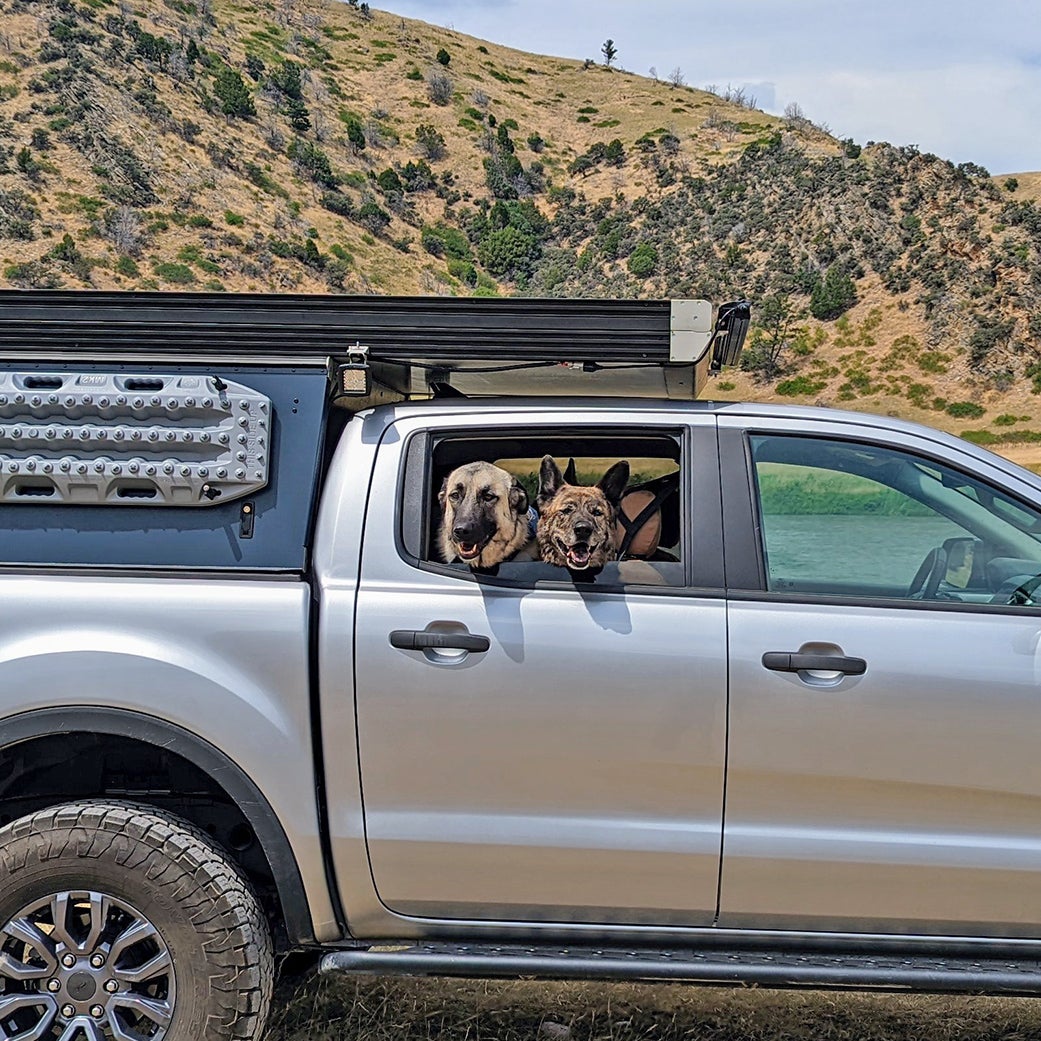
Credit: www.outsideonline.com
Frequently Asked Questions
Is It Safe To Put Dogs In The Back Of A Suv?
Yes, it is safe to put dogs in the back of a SUV. Use a secured crate or dog seatbelt for safety.
Where Should A Dog Ride In A Suv?
A dog should ride in the back seat or cargo area of an SUV. Use a pet seatbelt or crate for safety.
How To Safely Transport Dog In Suv?
Use a secured crate or pet carrier. Attach it to the seat or cargo area. Ensure proper ventilation. Use a harness or pet seatbelt. Avoid feeding your dog right before the trip.
How Do I Get My Dog In The Back Of My Suv?
Use a ramp or stairs for easier access. Train your dog with treats and praise. Lift smaller dogs gently. Ensure the SUV is secure and comfortable.
Conclusion
Ensuring your dog’s safety in the back of an SUV is crucial. Use harnesses, crates, or barriers to secure them. Avoid letting your dog roam freely in the vehicle. Prioritize their comfort and safety during every trip. A few precautions can make traveling with your furry friend both safe and enjoyable.
- Can I Get in a Taxi Without a Car Seat? - January 26, 2025
- Can I Get Chlamydia From a Toilet Seat? - January 26, 2025
- Can I Get an Uber With a Car Seat? - January 26, 2025

